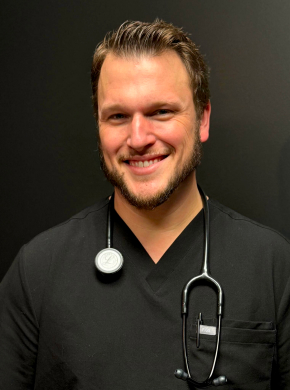In recent years, Platelet-Rich Plasma (PRP) therapy has emerged as a revolutionary treatment in regenerative medicine, offering renewed hope for those suffering from joint pain and injuries. At Defiant Health Spa, we believe understanding the benefits and applications of PRP joint injections can empower you to make informed decisions about your health. This blog post explores how PRP therapy aids in healing, its potential uses, and what you can expect from this innovative treatment.
In recent years, PRP therapy has emerged as a revolutionary treatment in regenerative medicine, offering renewed hope for those suffering from joint pain and injuries. At Defiant Health Spa, we believe understanding the benefits and applications of PRP joint injections can empower you to make informed decisions about your health. This blog post explores how PRP therapy aids in healing, its potential uses, and what you can expect from this innovative treatment. As you delve into the transformative power of PRP, consider how this natural, minimally invasive option might align with your personal health goals. By opting for PRP therapy, you’re investing in a treatment that aims to alleviate pain and promotes long-term joint rehabilitation and wellness.
How PRP Speeds Up the Healing Process
The healing power of PRP lies in its composition. PRP is derived from a small sample of your blood, which is processed to concentrate the platelets. These platelets are rich in growth factors and cytokines, crucial for tissue repair and regeneration. When injected into an injured area, PRP can accelerate the body’s natural healing process by enhancing collagen synthesis, promoting cell growth, and reducing inflammation.
This therapy benefits musculoskeletal injuries, enabling faster recovery from sports injuries, rotator cuff tears, and ligament injuries. PRP injections can significantly shorten recovery time by using the body’s healing mechanisms, allowing patients to return to normal activities more quickly.
Conditions Treatable with PRP Joint Injections
PRP joint injections are a versatile treatment option for a range of conditions, including:
- Knee Pain and Osteoarthritis: PRP therapy can offer relief for chronic knee and arthritis-related joint pain patients by promoting cartilage regeneration and reducing inflammation.
- Tendon and Ligament Injuries: Effective in treating tendon injuries and partial-thickness rotator cuff tears, PRP can enhance the healing of damaged tissue and improve mobility.
- Chronic Soft Tissue Injuries: PRP injections aid in tissue repair and pain management for conditions like patellar tendinopathy and lateral epicondylitis.
- Acute Musculoskeletal Injuries: PRP therapy is also used to treat acute injuries such as overuse and muscle injuries, providing a non-surgical alternative to traditional treatments.
What Makes PRP Effective for Joint Recovery
The effectiveness of PRP therapy stems from its ability to deliver a concentrated dose of growth factors directly to the site of injury. This concentration of platelets and growth factors stimulates the body’s natural healing processes, leading to improved tissue repair and regeneration outcomes.
Furthermore, PRP is a safe treatment option with minimal risk, as it utilizes autologous blood, reducing the risk of infection and adverse reactions. This makes it a suitable choice for individuals seeking alternatives for pain relief without the need for invasive procedures.
Potential Risks and Side Effects of PRP Injections
While PRP therapy is considered a safe treatment option, it’s essential to be aware of potential risks and side effects. Some patients may experience mild pain or discomfort at the injection site, which typically subsides within a few days. In rare cases, there may be a risk of infection or bleeding, but these are minimized when a qualified healthcare professional performs the procedure.
Before undergoing PRP therapy, it’s crucial to discuss any existing medical conditions or medications with your provider to ensure the treatment is appropriate for your individual needs.
What to Expect After Treatment
Following a PRP injection, most patients can resume their daily activities within a short period, although it’s advisable to avoid strenuous exercise for a few weeks after treatment. The healing process may vary depending on the severity of the condition and the individual patient’s response to treatment.
Typically, patients notice an improvement in pain and mobility within a few weeks of treatment, with continued progress as the healing process takes effect. In some cases, additional injections may be recommended to achieve the desired results.
At Defiant Health Spa, we offer personalized treatment plans tailored to your needs, ensuring you receive the most effective treatments for your condition. Whether you’re an athlete seeking faster recovery from a sports injury or a chronic pain sufferer looking for long-lasting pain relief, PRP therapy may be the key to unlocking your body’s remarkable healing ability.
If you’re interested in exploring PRP joint injections as an alternative for pain relief, contact us today to schedule a consultation with our experienced team. Together, we can develop a treatment plan that supports your health goals and enhances your quality of life.







